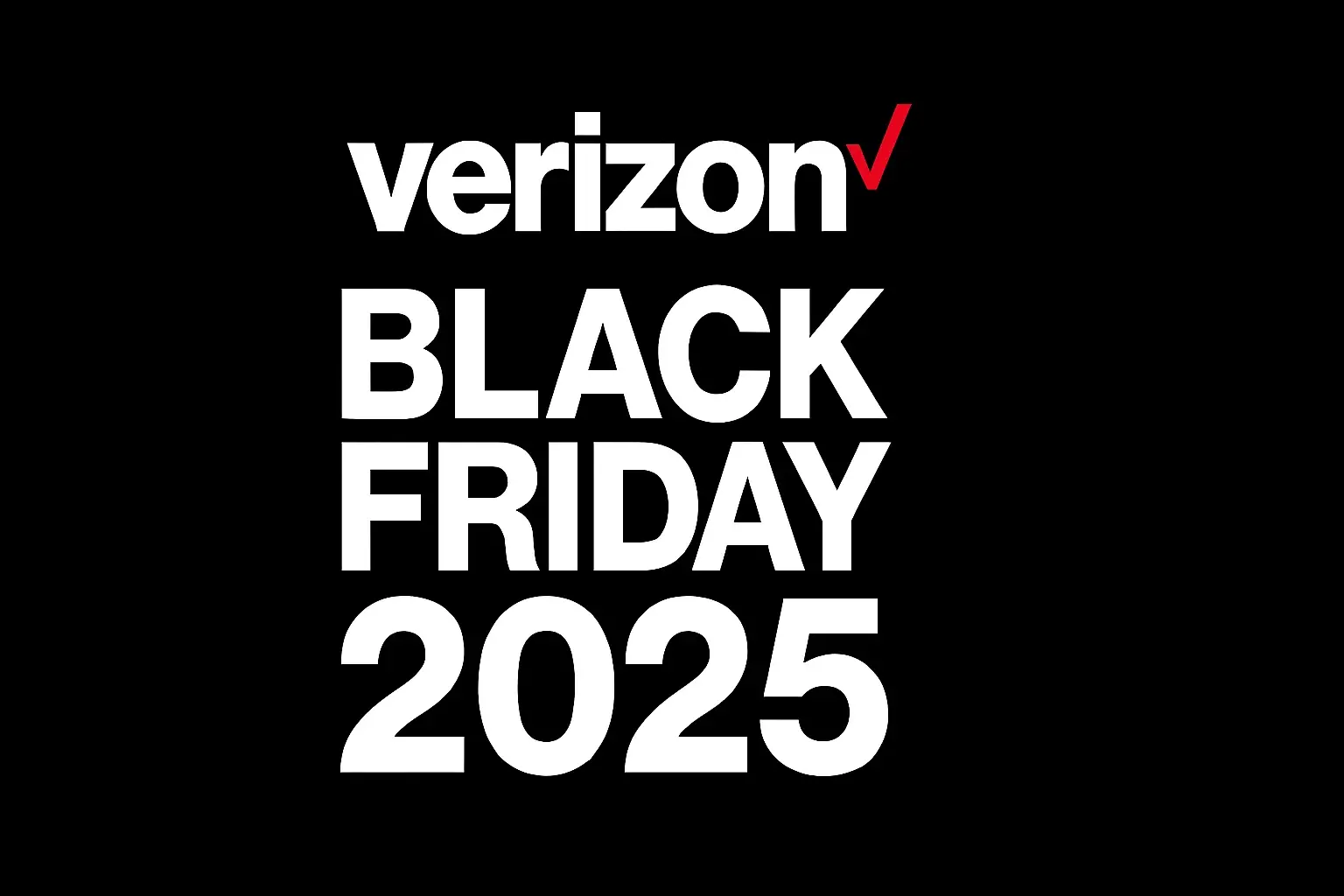Is there an activation fee for Verizon?

Understanding Verizon's activation fees is crucial before signing up for a new line or device. This guide clarifies whether an activation fee exists, what it entails, and how to potentially avoid or reduce it, ensuring you make an informed decision for your new service.
Understanding Verizon Activation Fees
When you decide to join the Verizon network, whether it's for a brand-new smartphone, a tablet, or even just adding a line to your existing plan, you might encounter a line item on your bill called an "activation fee." This fee is a common practice across many telecommunication providers, and Verizon is no exception. It's essentially a charge for the service of setting up your new line of service, provisioning your device, and integrating it into their vast network infrastructure. While it might seem like an unnecessary cost, understanding its purpose and the circumstances under which it applies can help you navigate your Verizon service agreement more effectively.
The primary goal of an activation fee is to cover the administrative and technical costs associated with bringing a new customer or a new device onto the network. This includes everything from the system processing required to assign a phone number and activate a SIM card to the support provided by customer service representatives to ensure your service is up and running smoothly. For new customers, it signifies the initial setup of their entire account. For existing customers adding a line or upgrading a device, it represents the integration of that new element into their established service.
It's also important to distinguish activation fees from other potential charges, such as device purchase costs, monthly service plan fees, or taxes and surcharges. The activation fee is a one-time charge, typically appearing on your first bill after service activation. Many users search for "Is there an activation fee for Verizon?" because they want to avoid unexpected costs. This comprehensive guide aims to demystify these fees, providing you with the knowledge to anticipate them, understand their value, and explore avenues to minimize or even eliminate them.
Verizon Activation Fee 2025: The Current Landscape
As we move into 2025, the landscape of mobile carrier fees remains largely consistent, with activation fees still a standard practice for major providers like Verizon. While the exact dollar amount and the specific conditions under which they are applied can fluctuate slightly due to promotions and policy updates, the fundamental concept of an activation fee persists. Verizon's approach to these fees is generally aligned with industry norms, aiming to recoup the costs associated with onboarding new services and devices.
For the vast majority of new line activations and device upgrades, customers can expect to see an activation fee on their initial Verizon bill. This fee is not a hidden charge; it's typically disclosed during the sales process, whether you're signing up online, in a Verizon store, or over the phone. However, the clarity of this disclosure can sometimes be lost in the excitement of getting a new phone or a great plan, leading to surprise when the bill arrives.
In 2025, Verizon continues to offer various plans and device financing options. Each of these can interact with the activation fee in different ways. For instance, certain promotional offers might waive the activation fee as an incentive for new customers. Conversely, adding a line to an existing account or upgrading an older device might still incur the standard fee unless a specific promotion overrides it. The Bring Your Own Device (BYOD) scenario also has its nuances, as the fee structure can differ compared to purchasing a device directly from Verizon.
Understanding the current state of Verizon's activation fees in 2025 requires looking at their official policies, current promotions, and the different service scenarios. This guide will delve into these specifics, providing a clear picture of what to expect and how to manage these charges effectively. The core message for 2025 remains: be prepared for a potential activation fee, but also be aware of the strategies that can help you mitigate or avoid it.
How Verizon Activation Fees Work
Verizon's activation fees are designed to cover the administrative and technical processes involved in setting up a new line of service or integrating a new device into their network. These fees are typically one-time charges that appear on your first bill after your service is activated. The fee structure can vary slightly depending on the specific situation, such as whether you are a brand-new customer, an existing customer adding a line, or if you are bringing your own device.
New Line Activation
When you sign up for a new Verizon wireless plan and activate a new line of service, a standard activation fee is usually applied. This fee covers the cost of setting up your account, assigning a new phone number, provisioning your SIM card (if applicable), and ensuring that your service is fully functional on the Verizon network. For new customers, this is the primary activation fee they will encounter. The process involves system updates and administrative tasks to integrate your new line into Verizon's billing and network management systems. This fee is a fundamental part of the onboarding process for new subscribers.
Device Upgrade Activation
If you are an existing Verizon customer and decide to upgrade your current device, you may also be subject to an activation fee. This fee is applied when you activate a new phone or other compatible device on your existing line. The purpose is similar to a new line activation: to cover the costs associated with integrating the new hardware and its associated services into your account and the Verizon network. Even though you are an existing customer, activating a new piece of hardware requires system adjustments and verification, which Verizon charges for. However, promotions for device upgrades sometimes include waived activation fees, so it's always worth checking current offers.
Bring Your Own Device (BYOD) Activation
For customers who choose to bring their own compatible smartphone or device to Verizon, the activation fee structure can sometimes differ. In many cases, a BYOD activation fee is still applied, as Verizon still needs to activate the device on its network and integrate it into your service plan. This fee covers the technical process of ensuring your device is compatible, provisioning its access to the network, and setting up your service. However, some promotions or specific BYOD plans might offer a reduced fee or even waive it entirely as an incentive for customers to switch to Verizon with their existing hardware. The exact fee for BYOD can vary, and it's essential to verify this during the sign-up process.
Verizon Online vs. In-Store Activation Fees
Historically, there have been instances where Verizon offered slightly different activation fee structures or waived fees for online activations compared to in-store activations. As of 2025, this distinction is less pronounced, but it's still worth noting. Online activations might sometimes be associated with fewer overhead costs for Verizon, potentially leading to more frequent online-exclusive promotions that waive activation fees. In-store activations, while offering personalized assistance, might have a more standardized fee structure. However, both channels are subject to the same overarching policies and promotional opportunities. It's always advisable to check the latest offers on the Verizon website or speak with a representative at a retail store to understand the most current fee situation for your specific activation scenario.
Typical Verizon Activation Fee Amounts (2025)
In 2025, the standard activation fee for a new line of service or a device upgrade with Verizon typically falls within a common range. While Verizon occasionally runs promotions that waive these fees, the baseline charge for activating a new line or a new device on an existing line is generally consistent. For most new activations, whether it's a new customer or an existing customer adding a line, the fee is commonly around $30 to $40 per line. This amount is applied to your first bill after the service is activated.
It's important to understand that this fee is per line. So, if you are activating multiple new lines simultaneously, you will be charged the activation fee for each individual line. For example, if you are adding three new lines to your account, you could expect to see a total of $90 to $120 in activation fees on your first bill, assuming no promotional waivers are in effect.
For Bring Your Own Device (BYOD) activations, the fee might be similar, often in the same $30 to $40 range. However, some specific BYOD promotions or plans might have slightly different fee structures, or the fee could be waived entirely as an incentive. Always confirm the exact BYOD activation fee when you are setting up service with your own device.
Key Points to Remember for 2025:
- New Line Activation: Typically $30-$40 per line.
- Device Upgrade Activation: Typically $30-$40 per line.
- BYOD Activation: Often similar, but can vary or be waived with specific promotions.
- Multiple Lines: Fee is charged per line.
- Promotional Waivers: Activation fees are frequently waived through limited-time offers.
While these are the typical amounts, Verizon's policies can change, and specific promotions can alter the fee structure. It is always best practice to confirm the exact activation fee with a Verizon representative or on their official website during the sign-up process to avoid any surprises on your first bill. Many users find that by carefully reviewing current deals, they can often secure an activation fee waiver.
Factors Influencing Activation Fees
Several factors can influence whether you are charged an activation fee by Verizon and, in some cases, the amount of that fee. While a standard fee exists, the specific circumstances of your service activation play a significant role. Understanding these factors can empower you to make informed decisions and potentially leverage them to your advantage.
Type of Service Activation
As discussed earlier, the primary driver of the activation fee is the type of activation. Activating a brand-new line of service for a new customer typically incurs the fee. Similarly, activating a new device on an existing line, even if you're an existing customer, usually triggers the fee. The Bring Your Own Device (BYOD) scenario can sometimes have a slightly different fee structure or be subject to specific promotions that might waive it, but it's not always guaranteed to be free of charge.
Promotional Offers and Deals
This is perhaps the most significant factor influencing activation fees. Verizon frequently runs promotions designed to attract new customers or encourage upgrades. These promotions often include waiving the activation fee as a perk. These offers can be tied to specific device purchases, plan sign-ups, or limited-time campaigns. For example, during major sales events like Black Friday or back-to-school season, you might find that activation fees are waived for many new activations or upgrades. Keeping an eye on Verizon's official website and promotional emails is crucial for taking advantage of these fee-waiving opportunities.
Customer Loyalty and Retention
In some instances, especially for long-standing customers looking to upgrade or add a line, Verizon might be willing to waive or reduce activation fees as a gesture of loyalty. If you've been a loyal Verizon customer for many years, it's worth inquiring about potential fee waivers when you initiate a new service or upgrade. While not a guaranteed policy, customer retention efforts can sometimes lead to concessions on standard fees.
Sales Channel: Online vs. Retail
While the distinction has become less pronounced, historically, Verizon has sometimes offered incentives for online activations, including waived activation fees. This is often because online sales channels have lower overhead costs. Conversely, in-store activations might have a more standardized fee structure, though sales associates can sometimes apply promotional waivers if available. It's always a good idea to compare offers across different channels if possible.
Plan Type and Device Package
The specific wireless plan you choose or the way you purchase your device can also play a role. Some premium plans or bundled device offers might come with activation fee waivers as part of the package. While less common, certain enterprise or specialized plans might have different fee structures. For most consumer-level plans and devices, the fee is standard unless a promotion applies.
Timing of Activation
As mentioned under promotional offers, the timing of your activation can be critical. If you sign up during a period when Verizon is actively running campaigns to waive activation fees, you stand a much better chance of avoiding the charge. This often coincides with major holidays, new device launches, or seasonal sales events.
By understanding these factors, you can better anticipate activation fees and strategize how to minimize them. The most effective strategy often involves combining a good promotional offer with a smart choice of service or device.
Strategies to Avoid or Reduce Verizon Activation Fees
While Verizon activation fees are a common part of the service setup process, there are several effective strategies you can employ to avoid or significantly reduce them. Being proactive and informed is key to minimizing these upfront costs.
Take Advantage of Promotions
This is the most common and often the easiest way to avoid activation fees. Verizon frequently runs promotions that waive activation fees for new lines or device upgrades. These can be found on their website, through email newsletters, or by speaking with a sales representative. Keep an eye out for:
- New Customer Offers: Often include waived activation fees.
- Device-Specific Deals: Purchasing certain phones might come with a waived fee.
- Seasonal Sales: Major holidays (Black Friday, Cyber Monday, etc.) and back-to-school periods are prime times for these offers.
- Limited-Time Campaigns: Verizon periodically runs short-term campaigns to boost new activations.
Always ask about current promotions when you are about to sign up or upgrade. Don't assume the fee is unavoidable.
Consider BYOD Options
If you have a compatible smartphone that you're happy with, bringing your own device (BYOD) can sometimes lead to waived activation fees or at least a reduced cost. While Verizon still needs to activate your device on their network, the process might be simpler, and they often use BYOD as an incentive to switch. Check Verizon's website for their BYOD compatibility checker and inquire about any specific BYOD promotions that might include a waived activation fee.
Negotiate with Verizon
This strategy is particularly effective for existing customers or those who are significant potential customers (e.g., adding multiple lines). If you are facing an activation fee and have explored all promotions, don't hesitate to speak with a Verizon sales representative or customer service agent. Explain your situation and inquire if there's any flexibility. Mentioning your loyalty to Verizon (if applicable) or the potential for adding multiple lines can sometimes prompt them to waive the fee as a retention or acquisition incentive. While not guaranteed, negotiation can sometimes yield positive results.
Timing Your Activation
As mentioned earlier, the timing of your activation can be crucial. If you can wait, try to align your activation with periods when Verizon is actively promoting waived activation fees. This might mean waiting for a new device launch that comes with a special offer or holding off until a major sales holiday. Planning your activation around these events can save you money.
Explore Authorized Retailers
Sometimes, authorized third-party retailers that sell Verizon services might have their own promotions or flexibility regarding activation fees. While they ultimately operate under Verizon's guidelines, they might offer bundles or incentives that effectively reduce or eliminate the activation cost. It's worth comparing offers from both direct Verizon channels and their authorized partners.
Online Activation Incentives
While not always the case, Verizon sometimes offers specific incentives for activating service online, which can include waived activation fees. Online channels often have lower overheads, allowing for such promotions. If you are comfortable with the online setup process, check Verizon's website for any exclusive online activation deals.
By combining these strategies, you can significantly increase your chances of avoiding or reducing Verizon's activation fees. The most successful approach often involves staying informed about current promotions and being willing to inquire about potential waivers.
Verizon Activation Fee vs. Competitors (2025)
When considering a new mobile carrier in 2025, it's helpful to compare their activation fee policies. While Verizon's fees are generally in line with industry standards, understanding how they stack up against other major carriers can provide valuable context for your decision.
Verizon: As established, Verizon typically charges a $30-$40 activation fee per line for new activations and device upgrades. This fee is standard unless waived by a promotion. They are known for their robust network coverage but often come with a premium price point, and their activation fees reflect this positioning.
AT&T: AT&T also generally charges an activation fee, often in a similar range to Verizon, typically around $30-$45 per line. Like Verizon, AT&T frequently offers promotions that waive these fees, especially for new customers or during specific sales events. Their fee structure is quite comparable.
T-Mobile: T-Mobile has historically taken a different approach. While they used to charge activation fees, they have shifted their strategy significantly. In 2025, T-Mobile generally does not charge activation fees for new lines or device upgrades. This "no activation fee" policy is a key differentiator and a significant selling point for them, particularly for budget-conscious consumers or those looking to minimize upfront costs. This move by T-Mobile has put pressure on competitors to offer more fee waivers.
MVNOs (Mobile Virtual Network Operators): Smaller carriers that operate on the networks of the major carriers (like Mint Mobile, Google Fi, Visible, etc.) often have different fee structures. Some MVNOs, particularly those with simpler online-only models, may not charge activation fees at all, or they might have a nominal fee for a SIM card. Others might have a fee that is lower than the major carriers. For example, Visible, which runs on Verizon's network, often has very competitive pricing and may waive activation fees as part of their onboarding process.
Comparison Table: 2025 Activation Fees (Typical)
| Carrier | Typical Activation Fee (per line) | Notes |
|---|---|---|
| Verizon | $30 - $40 | Often waived with promotions. |
| AT&T | $30 - $45 | Similar to Verizon; promotions common. |
| T-Mobile | $0 | Generally no activation fees. |
| MVNOs (e.g., Mint Mobile, Visible) | Varies ($0 - $25) | Often lower or waived; depends on the specific MVNO. |
Analysis for 2025:
While Verizon's $30-$40 activation fee is standard, T-Mobile's "no activation fee" policy makes them a more attractive option for those prioritizing upfront cost savings. However, the decision shouldn't solely rest on activation fees. Network coverage, plan features, device selection, and overall value proposition are equally important. Verizon's strength lies in its network reliability, which might justify the activation fee for some users. For those who are diligent, taking advantage of Verizon's frequent promotions can effectively neutralize the activation fee difference compared to T-Mobile or certain MVNOs.
When comparing, always look at the total cost of ownership over a year or two, including monthly plan costs, device financing, and any applicable fees. A carrier with no activation fee might have higher monthly rates, or vice versa. Therefore, a comprehensive comparison is essential.
What Happens If You Don't Pay the Activation Fee?
The Verizon activation fee is typically applied to your first bill. It's a one-time charge that is processed as part of setting up your new service or device. If you do not pay your first bill, which includes the activation fee, the consequences are similar to not paying any part of your bill.
Initially, Verizon will likely send you reminders and notifications about the outstanding balance. If the payment remains unaddressed, your service could be temporarily suspended. This means you would lose the ability to make calls, send texts, or use mobile data. Continued non-payment can lead to more severe actions.
Verizon may eventually disconnect your service entirely. If your service is disconnected due to non-payment, you might also incur additional fees to have your service reconnected. Furthermore, a history of non-payment can negatively impact your credit score, making it more difficult to obtain services from Verizon or other providers in the future. It can also lead to Verizon requiring a security deposit for future service activation.
In summary, not paying the activation fee is treated the same as not paying any other charge on your Verizon bill. It's crucial to settle your first bill promptly to ensure continuous service and avoid negative repercussions.
It's important to note that the activation fee is usually clearly itemized on your bill. If you believe you were incorrectly charged an activation fee, or if you were promised a waiver that didn't appear on your bill, you should contact Verizon customer service immediately to resolve the discrepancy. They can review your account and make necessary adjustments if an error occurred.
The best approach is to be aware of the activation fee before you sign up, check for any applicable waivers or promotions, and ensure you have the funds available to cover your first bill, which will include this fee. Proactive communication with Verizon regarding any payment difficulties is always recommended to prevent service disruption or credit damage.
Verizon Activation Fee FAQs and Clarifications
To further clarify common questions surrounding Verizon activation fees, here are answers to some frequently asked questions:
Is the activation fee refundable?
Generally, activation fees are non-refundable once the service has been activated and the fee has been processed. They are considered a one-time charge for the setup and provisioning of service. However, if you are within Verizon's return period and decide to cancel your service entirely, you might be able to get the fee refunded as part of the overall cancellation process. It's best to check Verizon's specific return and cancellation policies for details.
Can I avoid the activation fee if I am an existing customer?
Yes, existing customers can often avoid or reduce activation fees. This is frequently achieved by taking advantage of current promotions that waive activation fees for upgrades or adding new lines. Loyalty offers or negotiation with customer service representatives can also sometimes lead to a waiver. Always inquire about available incentives before proceeding with an upgrade or adding a line.
Does Verizon charge an activation fee for tablets or smartwatches?
Yes, if you are adding a new line of service for a tablet, smartwatch, or any other connected device that requires its own cellular plan and number, Verizon typically charges an activation fee for each line, similar to a smartphone. The standard fee of $30-$40 per line usually applies unless a specific promotion waives it.
Are there any hidden activation fees?
Verizon is generally transparent about its activation fees. The fee is usually disclosed during the sales process, whether online, in-store, or over the phone, and it will appear on your first bill. However, it's always wise to carefully review your order confirmation and your first bill to ensure all charges are as expected. If you encounter a fee you weren't expecting, contact Verizon customer service immediately.
How long does it take to activate service?
The activation process itself is usually quite fast, often taking anywhere from a few minutes to a couple of hours, depending on the type of activation and network conditions. For SIM card activations or device swaps, it can be almost instantaneous. For new lines or complex setups, it might take a bit longer. Your service will typically be active on the same day you initiate it, and the fee will appear on your subsequent bill.
What is the difference between an activation fee and a setup fee?
In the context of mobile carriers like Verizon, "activation fee" and "setup fee" are often used interchangeably to refer to the one-time charge for initiating new service or activating a new device. The term "activation fee" is more commonly used by Verizon. The core purpose is the same: to cover the administrative and technical costs of bringing you onto the network.
Can I get a waiver if I am switching from another carrier?
Switching from another carrier to Verizon is a common scenario, and it's often when activation fee waivers are most prevalent. Verizon frequently offers promotions specifically for switchers, which can include waived activation fees, device discounts, or other incentives. Always check for "switcher deals" when considering Verizon.
By addressing these common questions, we aim to provide a comprehensive understanding of Verizon's activation fees and how they might impact your decision.
Conclusion: Making the Right Choice with Verizon
In conclusion, the question "Is there an activation fee for Verizon?" is definitively answered with a "yes, typically." As of 2025, Verizon generally charges a standard activation fee, usually between $30 and $40 per line, for new line activations and device upgrades. This fee covers the essential administrative and technical costs of integrating your service or device into their network. For Bring Your Own Device (BYOD) scenarios, the fee may apply similarly, though specific promotions can alter this.
However, the presence of an activation fee does not mean it's an unavoidable expense. Our comprehensive analysis reveals numerous strategies to either avoid or significantly reduce this cost. The most effective approach involves actively seeking out and leveraging Verizon's frequent promotional offers, which often include waived activation fees, especially for new customers, device upgrades, or during seasonal sales events. Timing your activation strategically during these promotional periods can be a game-changer.
Furthermore, considering BYOD options, exploring deals at authorized retailers, and even engaging in polite negotiation with customer service representatives can yield positive results. When comparing Verizon to competitors like T-Mobile, which generally has no activation fees, it's vital to look beyond just this single charge. Evaluate the overall value proposition, including network quality, plan features, device selection, and long-term costs. Verizon's robust network performance is a key differentiator that may justify the activation fee for many users.
Ultimately, making the right choice with Verizon involves being an informed consumer. Understand the fees, be aware of current promotions, and utilize the strategies outlined in this guide. By doing so, you can ensure a smooth and cost-effective transition to Verizon, maximizing the value you receive from your new mobile service.





